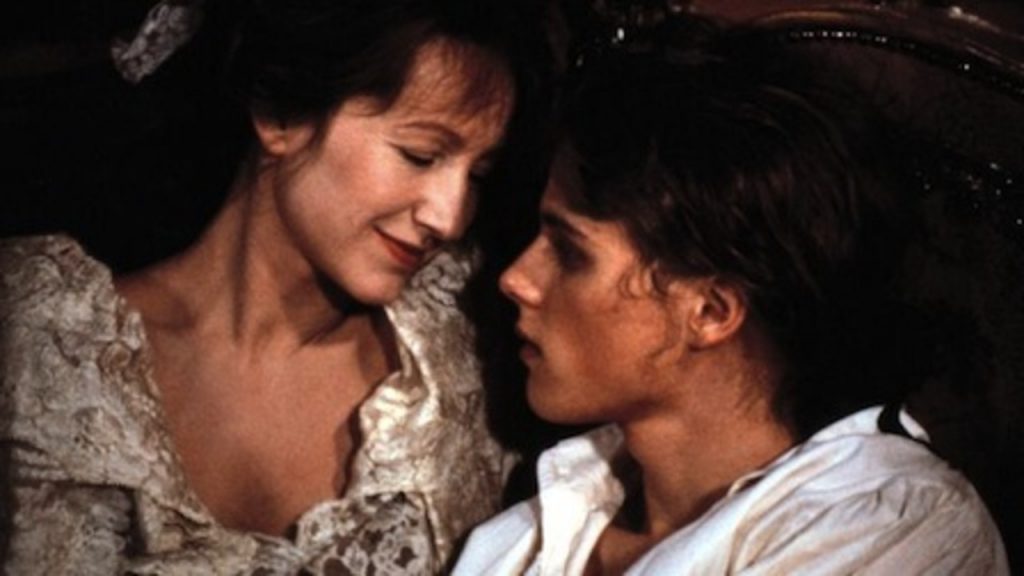Back in 2011 I had a forty-five minute telephone conversation with director Paul Morrissey. I was ecstatic beyond belief, Morrissey being one of my cinematic heroes, a hero who has gone greatly under appreciated in this country and often neglected. The most pleasurable part of this conversation was Morrissey’s willingness to discuss his film Beethoven’s Nephew (1985). Beethoven’s Nephew has had one home video release in America back in the eighties largely because of copyright and ownership issues that have arisen as an on going conflict between the film’s writer/director and his European producers. These circumstances have kept Beethoven’s Nephew, as well as Morrissey’s other later day masterpiece Spike Of Bensonhurst (1988), out of the public’s sight and mind. As a result studies on the cinema of Paul Morrissey are largely restricted to his work for Warhol, his seventies cult classics, European horror comedies, and the street gang soap opera Mixed Blood (1982), negating the consideration of what I consider Morrissey’s most mature work, Beethoven’s Nephew.
Morrissey’s career post his break from the Warhol brand after Flesh For Frankenstein (1974) resulted with a decline in the director’s profile. Until 1975 Morrissey had been working in the shadow of Andy Warhol, trading on the pop artist’s name to obtain international distribution for the kind of underground films that rarely got out of Downtown New York city. The films that follow are indicative of a few things, the first being Morrissey’s continued outsider status in Hollywood, secondly that Morrissey’s popularity in Europe ensured exclusive overseas financing, and lastly that no one knew what kind of films Paul Morrissey should be making. When Morrissey returned to independent filmmaking with Mixed Blood he also returned to the break out aesthetic of his most renowned works Flesh (1968), Trash (1970) and Women In Revolt (1971). When Mixed Blood failed to find an audience Morrissey began seeking a project that could be made independently in Europe, whose subject matter could attract the consideration of serious critics and in turn put the director’s career back on track (a narrative that has always been common place among the lives of independent filmmakers from the likes of John Cassavetes and Jim Jarmusch to that of John Waters).

But Paul Morrissey was not out for the kind of art house status so many filmmakers crave, in fact, Morrissey intended Beethoven’s Nephew to be a more entertaining and informative commercial film than Milos Forman’s highly publicized Oscar winner Amadeus (1984). To ensure bankability, Morrissey lifted certain aspects of Amadeus’ narrative construction, but filtered these components to create a minimalist tableaux of vignettes that are strung together thematically more so than narratively. Morrissey’s co-writer, Mathieu Carriere, was entrusted with obtaining historical materials that could provide a trustworthy reference point with the hope of the film transcending the conventions of the average Hollywood biopic. The result of this peculiar form that the film has taken is entirely psychological. Beethoven’s Nephew works as a sort of psychological dossier on Beethoven whose scenes either function to give evidence to certain traits in Beethoven’s character or to explain the origins of certain obsessions and desires.
The key aspect of Morrissey’s depiction of Beethoven centers, as the title suggests, on the composer’s relationship with his nephew. In Morrissey’s film it is proposed that Beethoven’s sexual obsession with his nephew, so terribly suppressed, manifests itself in the form of possessiveness and various attempts at complete control. The equating of desire with control had long been a driving force in the cinema of Paul Morrissey. Consider any scene in Trash where Joe Dallesandro is propositioned for sex. When it is revealed Dallesandro can’t keep a hard-on the supporting characters begin crafting other means with which to control Joe. In Beethoven’s Nephew, as opposed to the numerous relationships addressed in Trash, the focus on sexual politics is centered on a single relationship whose analysis lasts the entire duration of the film. In this way Morrissey permits himself to engage in an active meditation on this theme that he presents to his audience as a perverted Punch & Judy Show.
Beethoven’s Nephew is also one of Morrissey’s rare films without an American actor, such as Joe Dallesandro, in the lead. Famous singer and actress Jane Birkin features prominently in the film as Johanna, with the larger than life Wolfgang Reichmann as Beethoven. This film, unlike Morrissey’s previous ventures, is cast to obtain the sort of marketable pedigree of Hollywood’s all-star biographical extravaganza box office films. It’s obvious now, looking back, that the casting choices for Beethoven’s Nephew were, perhaps, too European and therefore inaccessible in America, bypassing the very purpose of such casting.
It was all about the timing for Paul Morrissey. Where once his timing had been perfect with Flesh in 1968, his timing had become grossly inhibiting, causing his most nuanced film to be shelved after a brief limited run. When talking to Paul Morrissey on the phone a year ago about this film his anger was still palatable. His attempt at a come back had failed despite all of his skill and careful planning, and he was never again afforded the opportunities that had once greeted him at the onset of the seventies.
